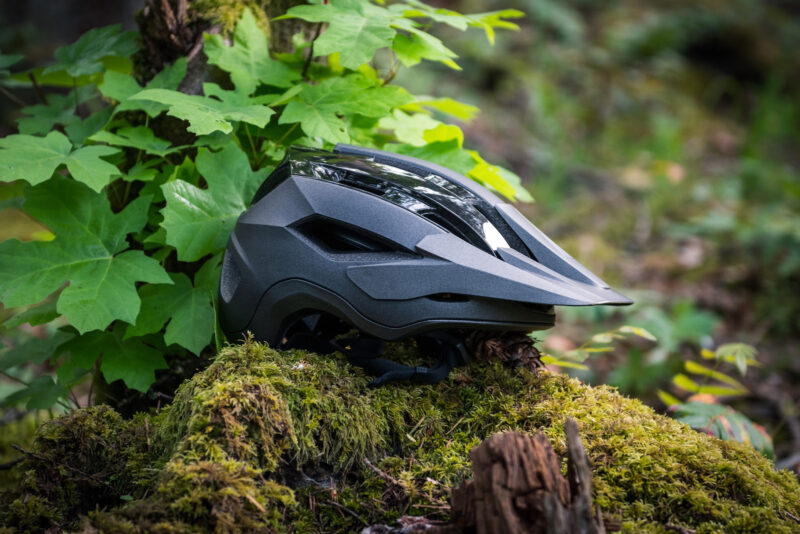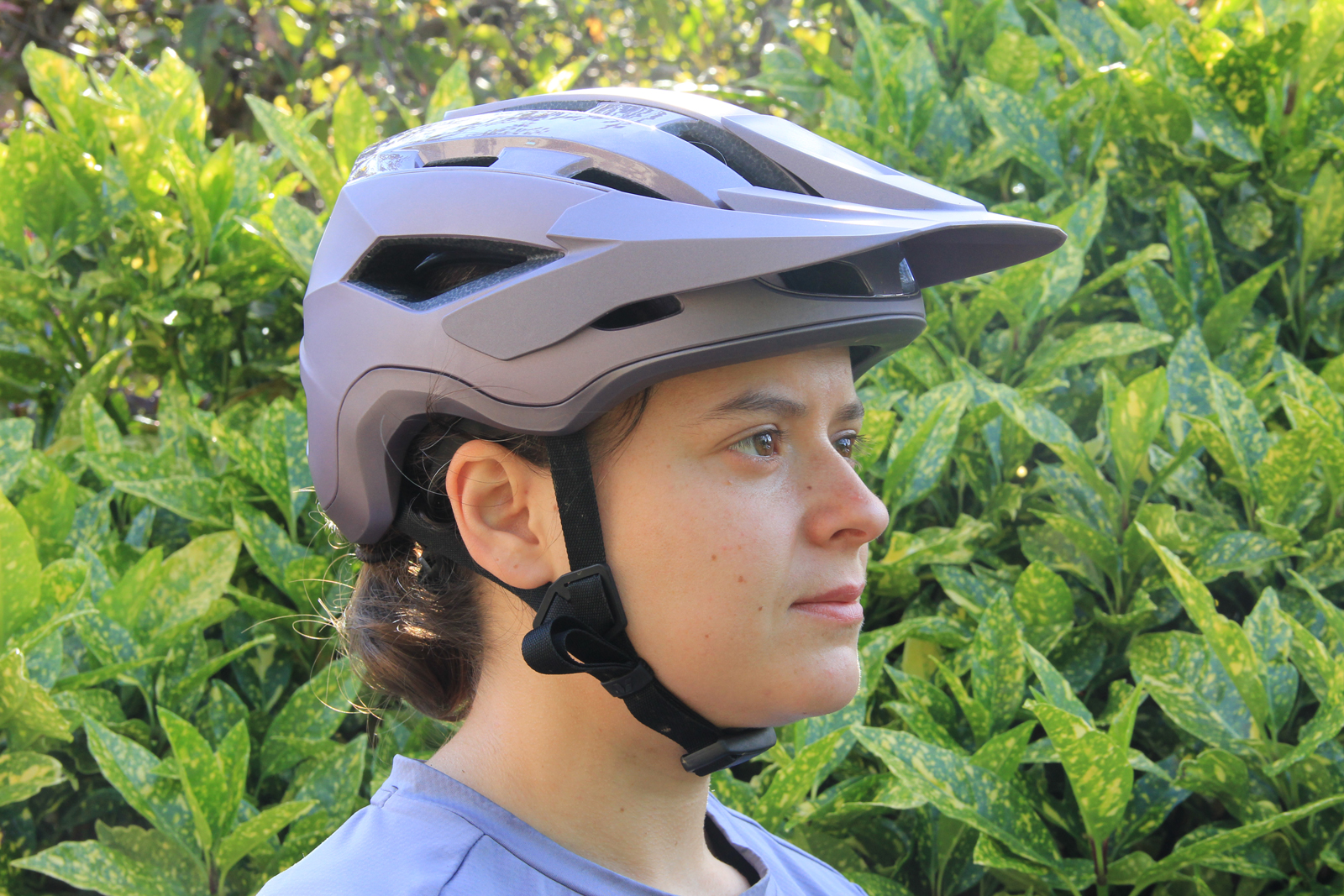The Liv Rail MIPS helmet is, without a shadow of a doubt, the brand’s most premium off-road helmet to date, featuring the lightweight MIPS Air Node liner to help protect against rotation-induced concussions, with a three-part in-mould construction home to a dual-density EPS. Independent helmet safety testers, Virginia Tech, gave it a 5-Star rating, with a score of 11.08 (the lower the better). That puts it in 41st position, just shy of the 11.01 score awarded to the more expensive Troy Lee A3 MIPS.
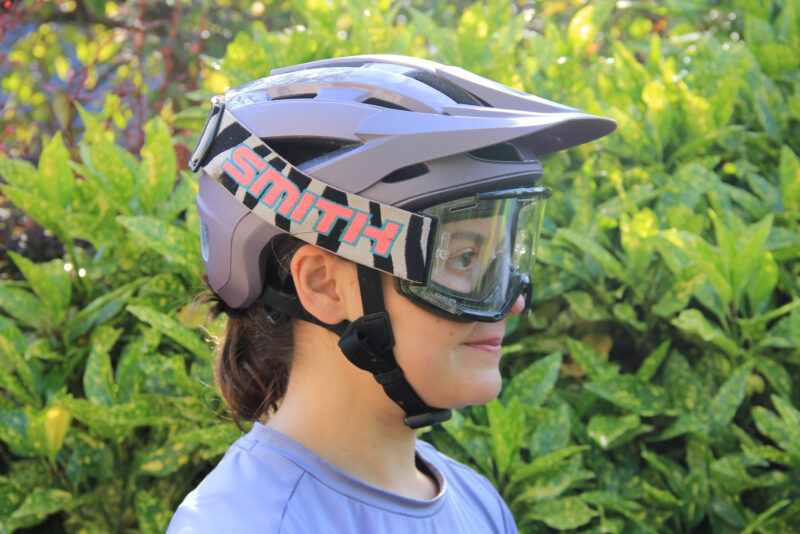
At $189.99 USD, the Rail is a rightfully feature-packed, lightweight mountain bike helmet, with a full wrap of the EPS giving it a high-end aesthetic. It gets a quality height-adjustable cradle, a magnetic Fidlock buckle securing the highly-adjustable chin strap, and a vent-free top surface for the positioning of an action camera. On that latter point, riders should be aware that a lot of event organizers have banned the securing of action cameras to the helmet body, only allowing them to be placed on the peak.



There are no fewer than twenty ventilation ports. The flexible peak has three-positions, the top-most of which allows for the stowage of googles when not in use.
Liv Rail MIPS MTB Helmet | Review
The Liv Rail MIPS covers head circumferences from 51cm to 59cm with just two sizes; Small for 51-55cm and Medium for 55-59cm. With a head circumference of around 54cm, I was given the Small to test. It weighs in at 335 grams, just shy of the 350 gram claimed weight.
My first impression? I really like the look of this helmet. It has a quality, two-tone finish, glossed up on top with a matte trim. It’s classy, in my opinion.
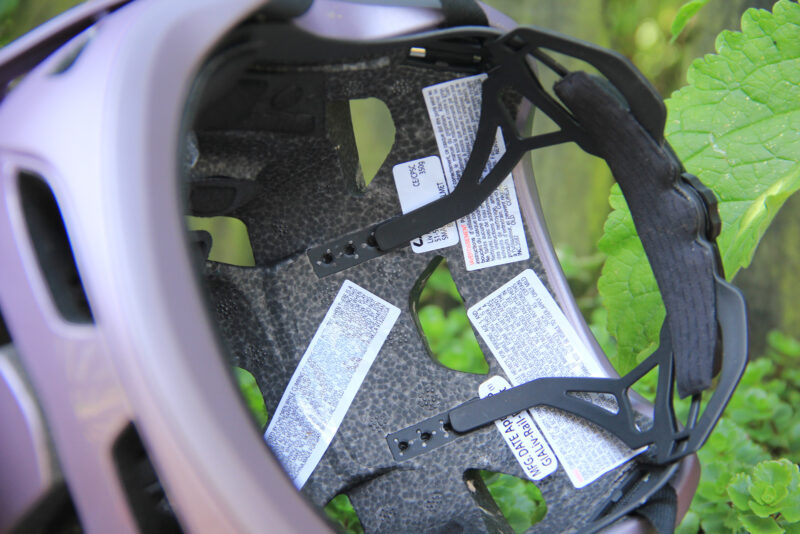
The rear cradle offers four-position height adjustment to suit a variety of head shapes. The helmet is ponytail compatible if I run the cradle in its lowest position, but at least on my head that does pull the top of the helmet down firmly, creating a pressure point on the front of my skull, just aft of my hairline.
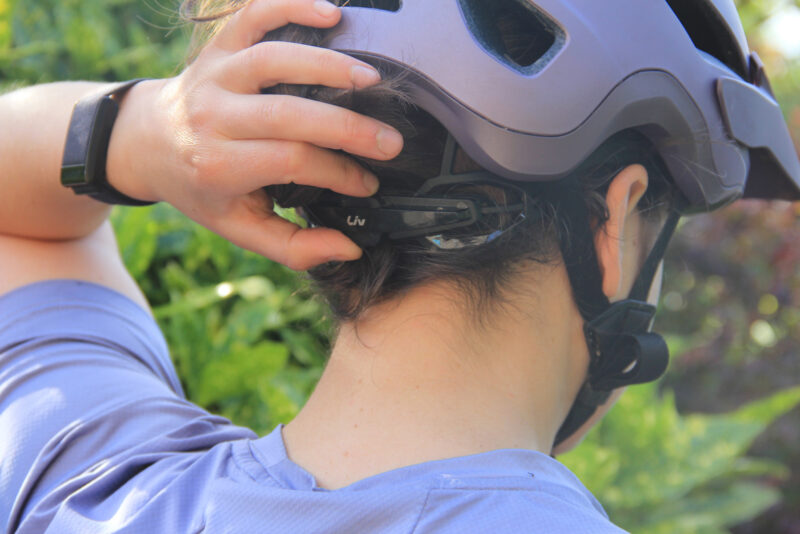
That’s not super comfortable for me, so I prefer to run the cradle in a higher position, forgoing the ability to pop my ponytail through the gap it creates. This makes for a much more comfortable fit, to the point where that pressure point is essentially eliminated.
The retention system can also be tightened at the rear of course, via an easy-to-use dial. It doesn’t cinch the plastic cradle down evenly through 360° as is the case with some other high-end helmets; it tightens from the rear, pulling the cradle forwards, with the front half of the cradle remaining fixed to the EPS. It certainly does the job, however.
In general, the helmet has a slightly wider fit than others I have tested recently; certainly wider than the ABUS Cliffhanger, with a broader shape that is more similar that offered across the range from MET helmets. Indeed, Liv say the Rail was created with use of a new, rounder head form to give an increased fit range.
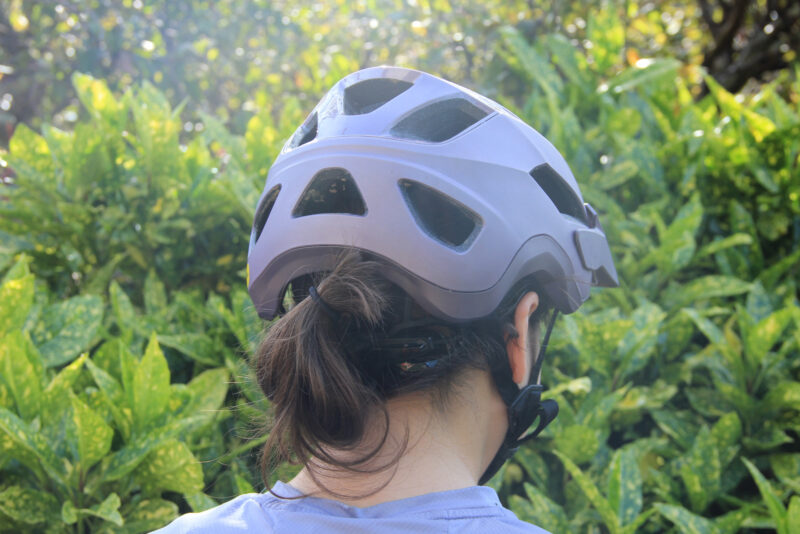
For me at least, there is a little side-to-side wiggle room, but not so much to concern me. For those who often struggle to find a good fit as a result of having quite a broad temple region, it could be worth giving the Liv Rail a try. Of course, it is always best to try before you buy.
The Liv Rail provides reasonably deep coverage at the rear, but not quite as deep as that delivered by the Troy Lee A3 MIPS.
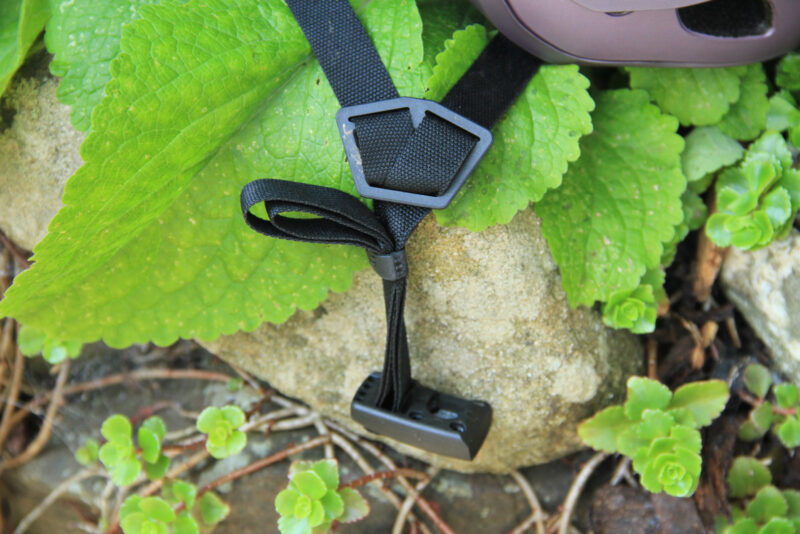
The Rail’s chin strap is very long, meaning it will adapt nicely to a wide range of wearers. For me, there was a lot of excess strap, but I was able to tuck it securely underneath the small rubber tab on the right side, where it was no trouble at all. It’s great to see the strap can be adjusted at the cam divider so that riders can dial in the perfect fit. It’s so important to get the correct ratio of strap length fore and aft of the ear in order to prevent the helmet being pushed away from your head during a crash. Of course, if you were to roll any distance while crashing hard, there’s a good chance you’ll hit your head more than once.
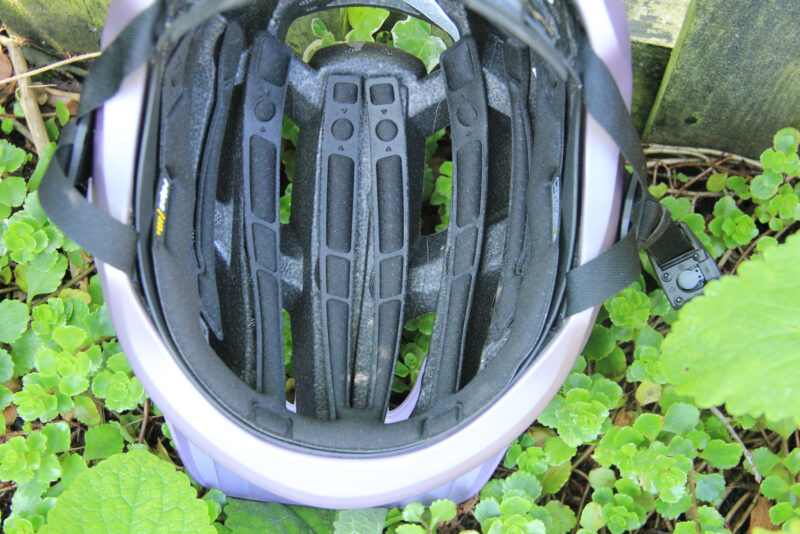
The MIPS Air Node liner is interesting, in that it is integrated into the comfort liner. It is one of MIPS’ lighter weight offerings, but still delivers 10-15mm of dissociation between the helmet’s main body and the liner that remains in close association with the wearer’s skull. This small amount of free movement is what allows the MIPS liner to reduce the forces involved in impacts where the rider’s head is forced to rotate violently.
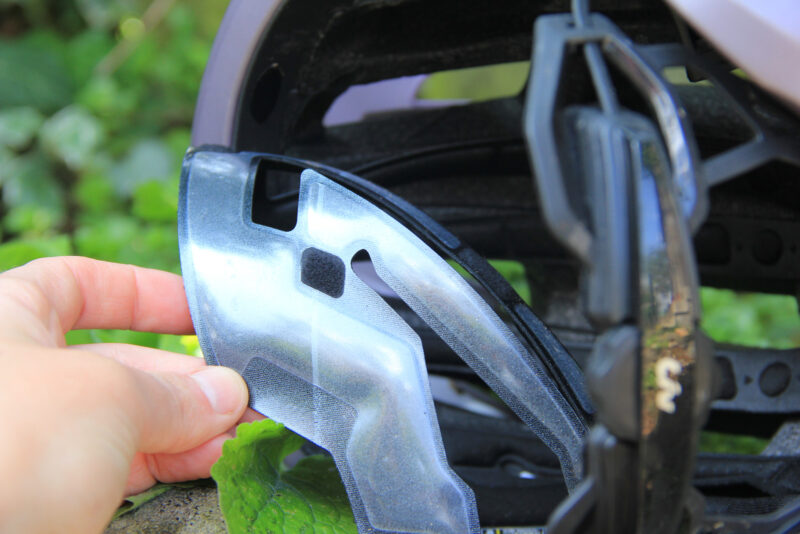
The pads contacting the skull/hair are backed with a low-friction plastic liner that sees low-profile pockets of air distributed across its surface. The liner connects to the helmet’s main plastic liner via “nodes”, which are essentially velcro, indicated on the comfort liner by the raised circles and arrows. You can read more about MIPS Air Node, and how to care for it here.
I did manage to get some rogue strands of hair trapped in the liner. That happens with any MIPS equipped helmet I wear, and it doesn’t bother me particularly. If however, it is something that really puts you off, I’d recommend taking a look at Lazer’s range of helmets that use a liner-free technology for dealing with rotational impacts.
I’m happy to report I have not crashed while wearing this helmet, so a full report on its capacity to keep me safe cannot be provided. To conclude this review of the Liv Rail MIPS helmet, here are some Pros and Cons that any prospective purchaser should consider…
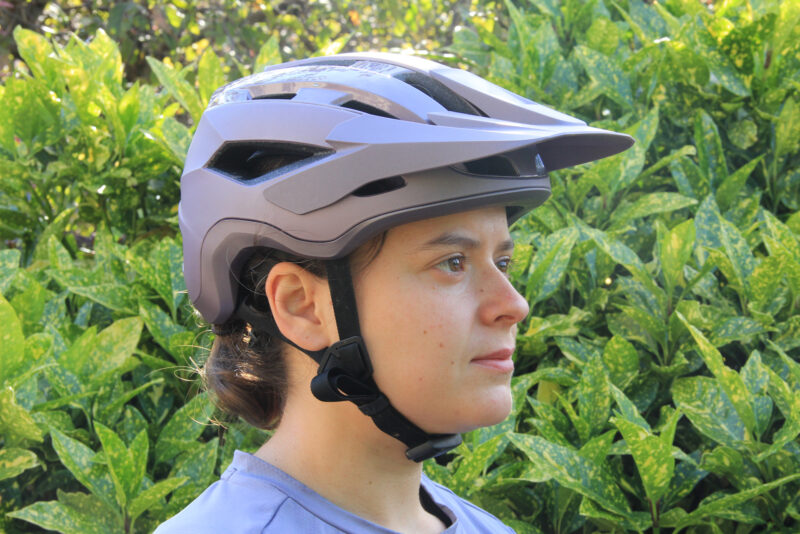
Pros
- Very secure, highly adjustable retention system
- Ponytail compatible
- Goggle compatible
- Lightweight
- Well-ventilated
- 5 Star Rating from Virginia Tech
Neutral Comments
- Wider fit for more rounded skulls that are broader in the temple region
Cons
- Nowhere to securely stow sunglasses
- There are a number of cheaper MIPS equipped helmets that have a better (safer) score from Virginia Tech – the Specialized Tactic 4 for example
Pricing & Availability
The Liv Rail MIPS off-road helmet has an SRP of $189.99 USD. Elsewhere, it is priced at $209.99 CAD // $3,390 MXN // 145 EUR in France // 149 EUR in Italy.
It is available as of today in S (51-55cm) and M (55cm-59cm), in Matte Black Diamond (below) and Matte Air Glow (tested).
